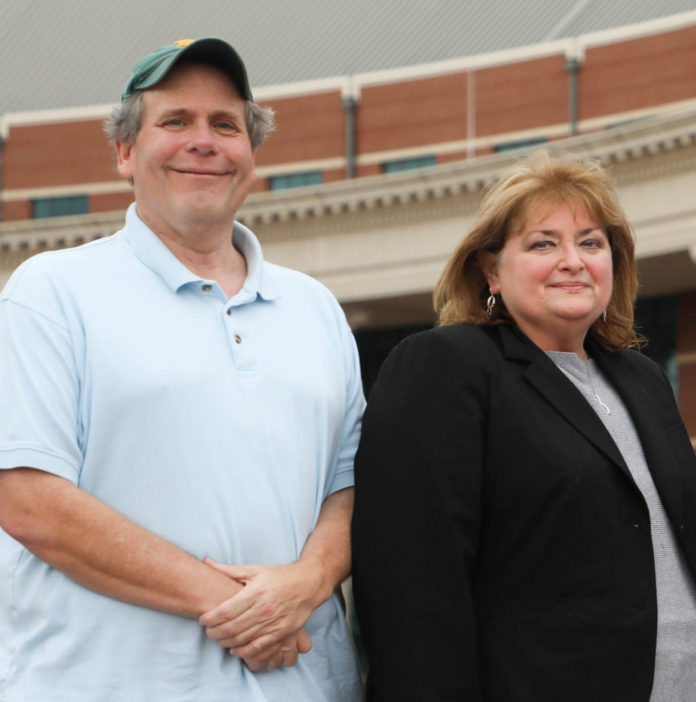
By Thomas Moran | Staff Writer
Baylor professors Dr. Mary Lynn Trawick and Dr. Kevin Pinney, united efforts in their cancer research studies. The two scientists and their laboratory staffs have made valuable contributions to cancer research using fascinating techniques.
The two labs are working together on projects involving the vascularization of tumors, Pinney said. For tumors to grow, they need sufficient blood flow and, if that blood flow is inhibited, the cancer cells are weakened or die because they receive no nutrients or oxygen.
Pinney began teaching at Baylor in 1993 and has been working on cancer research since then. Trawick has been conducting research since her graduate education and began focusing on cancer research when she and Pinney collaborated in 2000.
“We are interested in molecules that inhibit the tubulin and microtubule protein systems,” Pinney said. “Molecules that interfere with that protein system then can play a role in shutting down cell division. If you think about cancer, one of the trademarks of cancer is rapid replication of cells. So, if you could shut down that cell division, that would be a promising approach … We have some agents that do that really effectively.”
Cancerous tumors are relatively easy to regulate if caught early, Pinney said. It becomes more difficult when they begin to metastasize and spread around the body.
Pinney and his lab are more involved in the development of the medicinal compounds, or “vascular disrupting agents,” that enter the tumor and work to deteriorate the vascularization of the tissues. Trawick’s lab assists with designing the compounds and focuses on the biochemical and biological components of the research through testing live specimens.
“In the Pinney lab, they are involved in medicinal chemistry and synthetic chemistry,” Trawick said. “They synthesized some very potent compounds. In my lab, we are very interested in biochemistry and cell biology. So we do an evaluation of these compounds and evaluate them in cells. Through additional collaborators, we evaluate these compounds in vivo, in animals and in mice.”
One problem the two labs are working to solve is that the medicinal compounds degrade normal healthy tissue and vasculature, Pinney said. The challenge is to disrupt only the vasculature of the tumor.
The two are collaborating with Dr. Ralph Mason at the University of Texas Southwestern to test the agents that the Baylor-based labs develop. They utilize live mice to evaluate the compounds and their effectiveness on disrupting the vasculature of tumors.
Mason’s lab took human cancer cells and made them into “cancer cell lines” that could be propagated in mice, Trawick said. They then transfected them with firefly enzymes. As a result, the lab has mice with human tumors. When the tumors have sufficient vascularization, they glow with the bioluminescence of fireflies. Likewise, when the agents developed by Pinney and Trawick are effective, the tumor is poorly vascularized and will not glow as much.
Trawick and Pinney have several individual projects going in their research labs, as well.
Cancer research requires cooperation between Baylor labs and outside groups. Pinney’s research receives funding from the Cancer Prevention Research Institute of Texas. That funded work is crucial for Trawick’s research and Trawick’s team is closely connected to Mason’s at UT Southwestern.
“We don’t work in any kind of void or vacuum.” Pinney said. “It’s a big collaborative project.”





